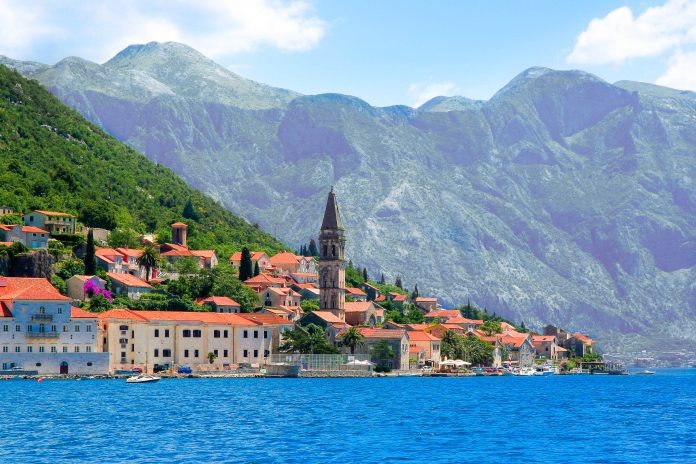Das schmucke Perast war einst florierendes Seefahrerzentrum in der Bucht von Kotor und wurde Ende des 20. Jahrhunderts komplett restauriert. Manche Teile Perasts sind immer noch Ruinen, doch die Mehrheit der prachtvollen Bauten erstrahlt bereits wieder in altem Glanz.
Der charmante Ort Perast in der traumhaften Bucht von Kotor in Montenegro ist schon von weitem eine Augenweide. An der Uferpromenade reihen sich prunkvolle Villen und mittendrin thront ein malerischer Glockenturm. Die beiden kleinen Klosterinseln Sveti Đorđe und Gospa od Škrpjela vor Perast geben dem Postkartenmotiv noch den letzten Schliff.
Inhaltsverzeichnis
BILDER: Perast
Geschichte von Perast
Perast, im 13. Jahrhundert erstmals urkundlich erwähnt, stand jahrelang im Schatten des bedeutenderen Kotor, schlug sich schließlich auf die Seite der Venezianer und bekämpfte Kotor, bevor es als eigenständige Kleinstadt für seine Seeleute, Händler und Nautiker bekannt wurde.
Die vier Reedereien Perasts unterhielten bis zu 100 Schiffe und viele Kapitäne wählten Perast als Alterswohnsitz. Der Reichtum der Kleinstadt wuchs über die Jahrhunderte und zwischen 1600 und 1797 entstanden prunkvolle Neubauten der Peraster Oberschicht.
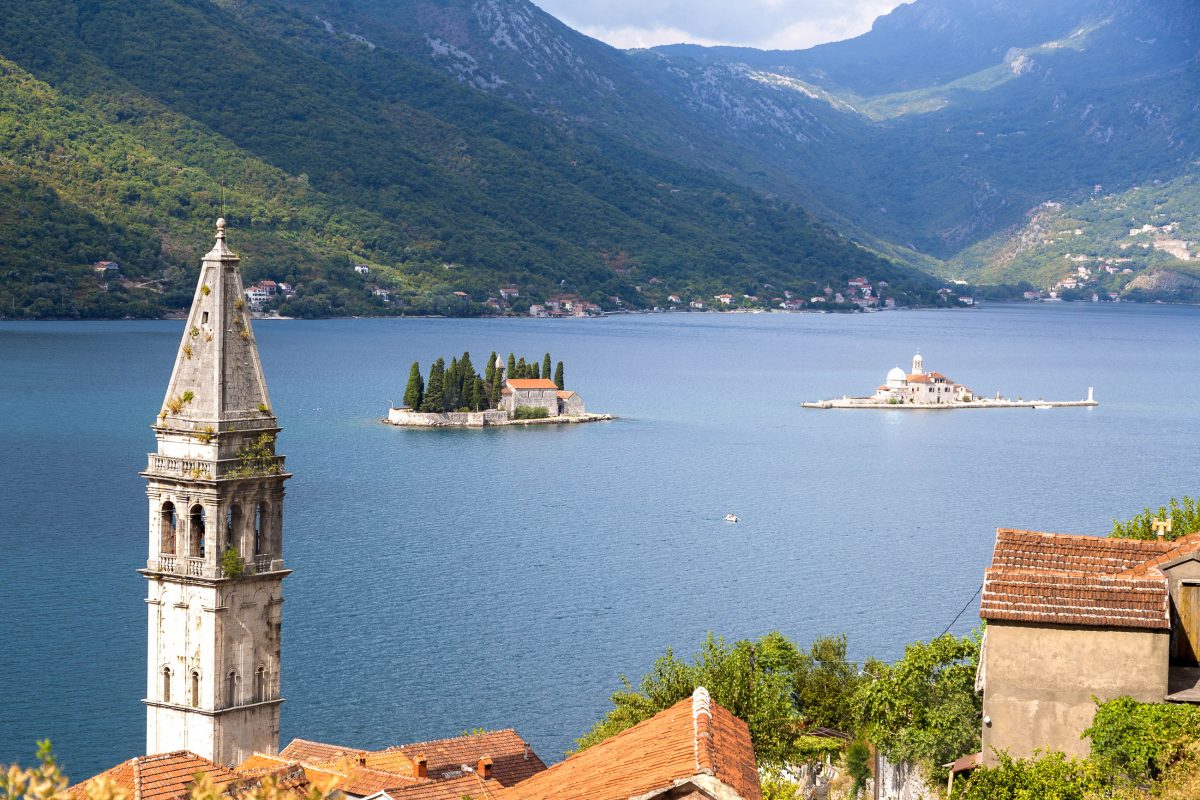
Als die internationalen Schiffe jedoch immer größer wurden, war der Hafen von Perast bald zu klein und der Geldstrom der Seefahrt begann, in andere Häfen zu fließen. Ab 1900 begann Perast langsam zu verfallen. Was von der einst florierenden Stadt noch übrig war, zerstörte das Erdbeben von 1979.
Gott sein Dank entschieden sich die Denkmalschützer Montenegros damals dafür, das Kleinod in der Bucht von Kotor wieder aufzubauen und so erstrahlt Perast heute dank Investitionen der UNESCO, des Staates Montenegro und vieler Privatsponsoren in altem Glanz. Manche Ruinen in den höher gelegenen Teilen von Perast warten noch immer auf ihrer Renovierung, was Perast jedoch einen ganz eigenen, historischen Charme verleiht.
Altstadt von Perast

Der Begriff „Altstadt“ ist in Perast kaum angebracht, sind die meisten Restaurationen der Kleinstadt ja kaum 50 Jahre alt. Dennoch zeugt das kompakte, denkmalgeschützte Architektur-Ensemble vom einstigen Wohlstand.
Ein klassischer Rundgang durch Perast ist nicht möglich, da die Straßen in höheren Lagen allesamt noch nicht restauriert wurden und viele davon in Sackgassen enden. Die beste Art, Perast zu erkunden ist daher von Ost nach West an der Uferpromenade entlang, mit einzelnen Abstechern ins „Hinterland“.
Sveti Nikola
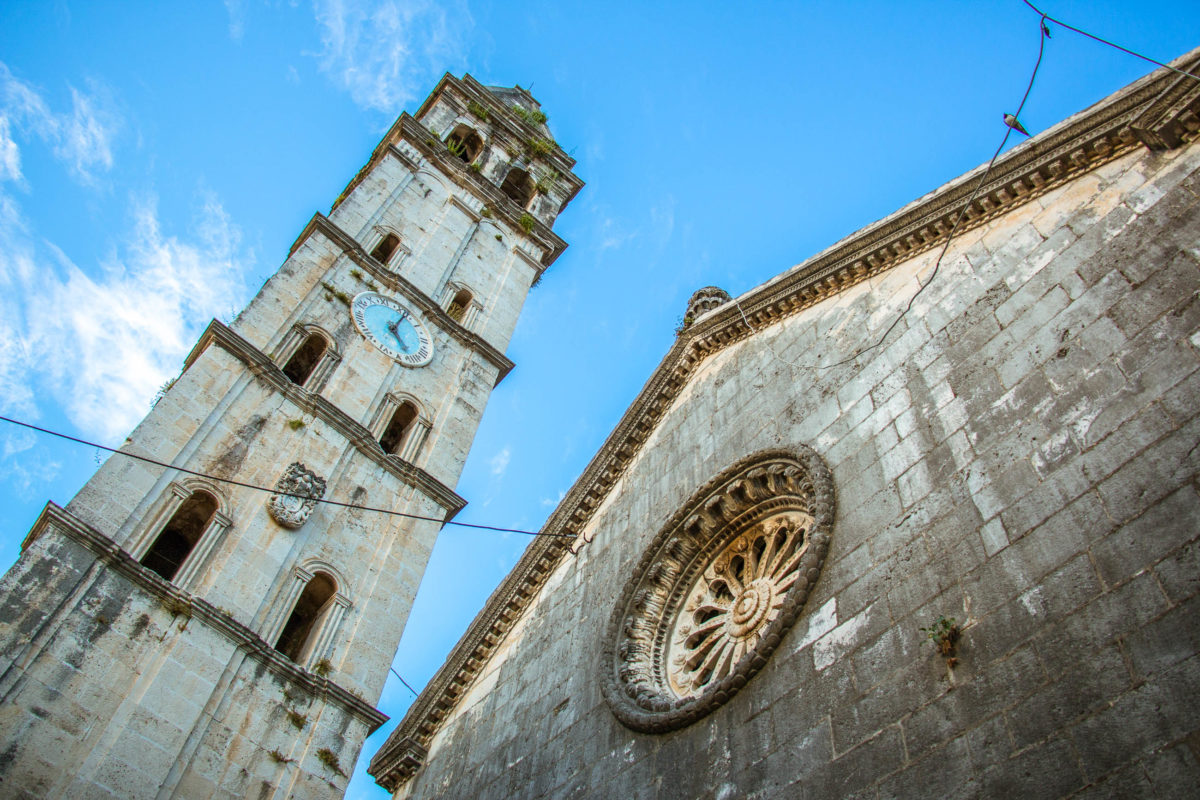
Schon von weitem unmöglich zu übersehen ist die markante Kirche des Hl. Nikolaus, deren 55m hoher Glockenturm der höchste in der gesamten Bucht von Kotor ist. Das 1616 erbaute Gotteshaus beherbergt eine reiche Innenausstattung mit einem venezianischen Altar und einem umfangreichen Kirchenschatz aus Gold und Silber. Die Gemälde stammen aus der Werkstatt des berühmten Barock-Künstlers Tripo Kokoljas.
Palata Smekja
Der nach der Renovierung größte Palast von Perast wurde 1764 erbaut und zeugt heute noch vom enormen Reichtum seiner Besitzer. Für das dreistöckige Gebäude mit den hochbarocken Balkonen und Portalen wurden die damals kostbaren Steine von der kroatischen Insel Korčula verwendet.
Palata Zmajević
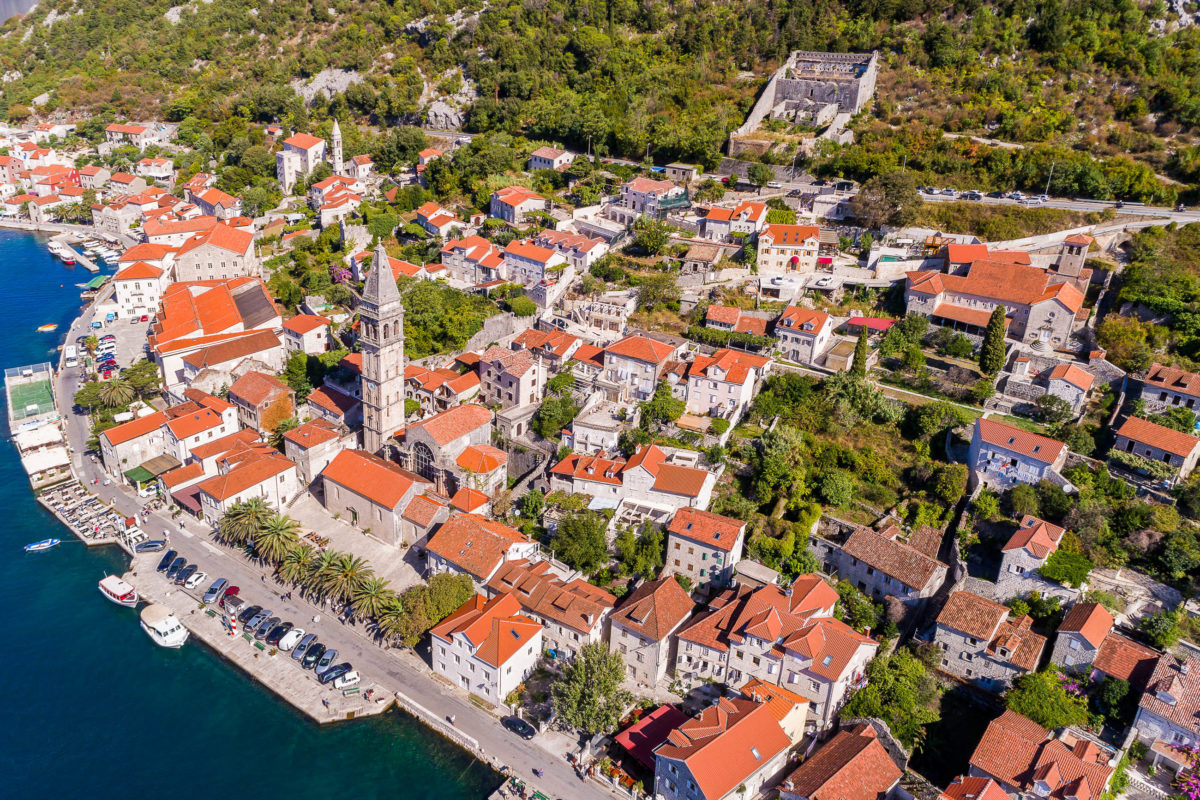
Auch hier hat sich Tripo Kokolja mit seinen Fresken verewigt. Einst Teil der relativ schwach ausgeprägten Stadtbefestigung ist von dem Palast heute nur noch eine Ruine übrig und die kunstvolle Bemalung kaum noch zu erkennen.
Sveti Jovana Krstitelja
Die Kirche von Johannes dem Täufer ist die erste von 14 Kirchen, die Perast meist von der Oberschicht gespendet wurden. In dem 1596 erbauten Gotteshaus erhält man einen ersten Vorgeschmack auf die Innenausstattung der Gospa od Škrpjela, denn auch dort wurden die Gemälde vom berühmten Barock-Künstler Tripo Kokolja geschaffen.
Palata Bujović
Das letzte große Gebäude auf dem Weg über die Strandpromenade ist auch der einzige Palast von Perast, der von innen besichtigt werden kann. Der Palata Bujović aus dem späten 17. Jahrhundert beherbergt das Heimatmuseum von Perast, welches Dokumente und andere Fundstücke aus der Blütezeit der Stadt präsentiert.
Gospa od Škrpjela
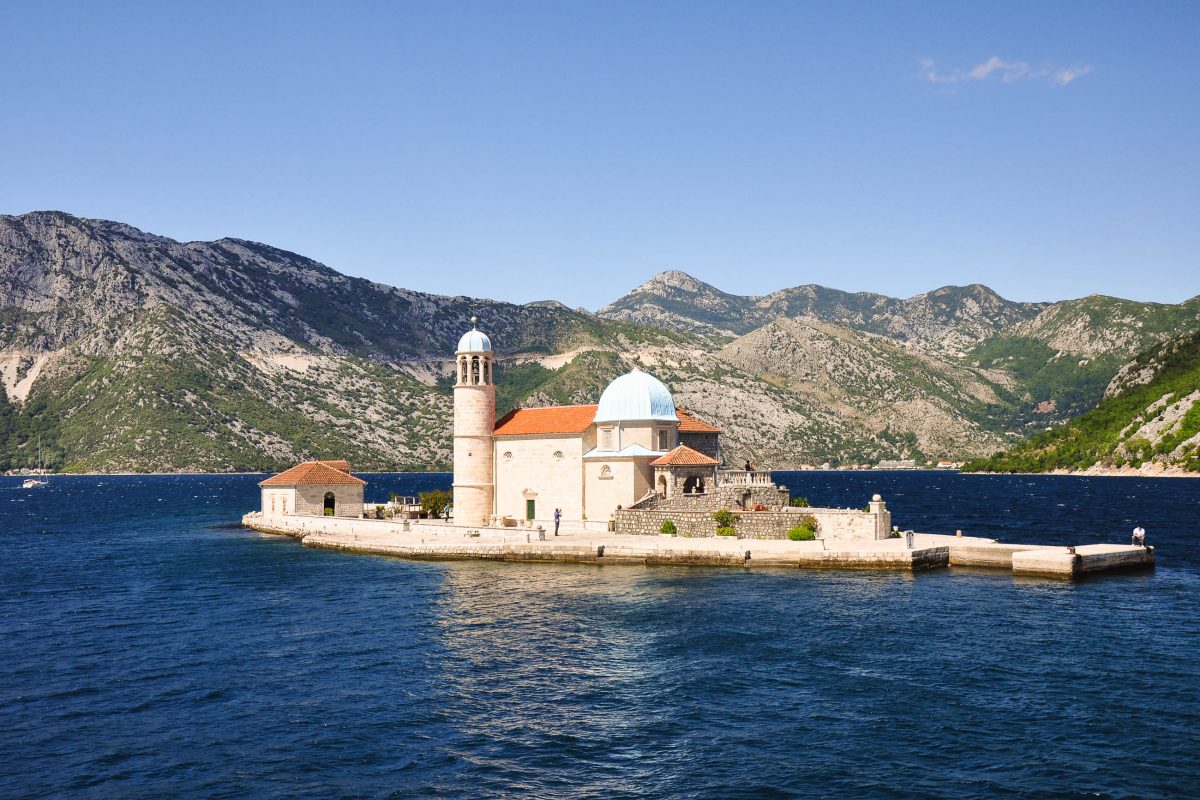
Die Gospa od Škrpjela liegt als eine von zwei Inseln vor Perast und kann für ein paar Euro mit dem Boot erreicht werden. Die kleine Kircheninsel hat eine wahrlich einzigartige Entstehungsgeschichte, sie wurde nämlich künstlich aufgeschüttet. Die weniger romantische Fassung ist dass die Gospa od Škrpjela nach und nach durch mehrere Felsbollwerke und gesunkene Schiffe, die Steine geladen hatten, emporgewachsen ist.
Legende der Gospa od Škrpjela
Die Legende, die den Kindern erzählt wird, handelt jedoch von einem Seemann, der an dieser Stelle eine Ikone der Heiligen Gottesmutter gefunden hat. Diese trug er zu einem kranken Fischer, der auf der Stelle geheilt wurde.
Von nun an platzierten die Seefahrer nach jeder erfolgreichen Heimkehr einen Stein auf dem Felsen. Der Steinhaufen wuchs nach und nach zu einer Insel an, die groß genug war, um eine Kirche darauf zu bauen.
Die Ikone aus dem 15. Jahrhundert ist heute auf dem Altar aus schneeweißem Carrera-Marmor eines genuesischen Architekten im Inneren der Kirche zu sehen. Den „Ursprungsstein“ hinter dem Altar, auf dem Ikone gefunden wurde, zu berühren, soll übrigens Glück bringen.
Geschichte der Gospa od Škrpjela
Im Jahr 1452 wurde mit der Gospa od Škrpjela (wörtlich übersetzt etwa „Maria vom Felsen“) die erste serbisch-orthodoxe Kirche auf der künstlichen Insel errichtet. Der römisch-katholische Sakralbau, der heute zu sehen ist, stammt aus dem Jahr 1632 und wurde knapp 100 Jahre später renoviert und ausgebaut.
1736 wurde sie von Ivan Zanobetti, dem Bischof von Kotor, geweiht. Das einschiffige Kirchengebäude im byzantinischen Stil wird von einer 11m breiten Kuppel und einem schlanken Glockenturm geziert, deren himmelblaue Dächer über die Küste von Perast leuchten.
Kunst in der Gospa od Škrpjela
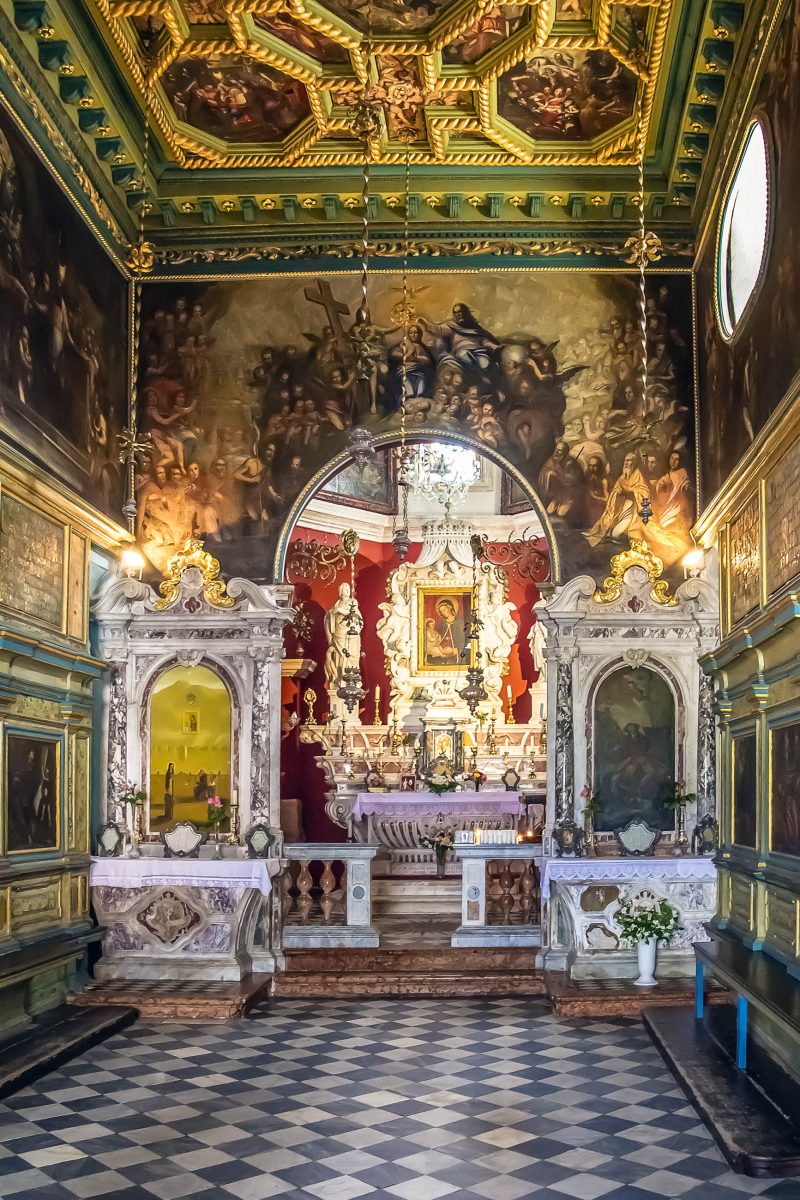
Im Innnenraum der Gospa od Škrpjela sind knapp 70 kunstvolle Gemälde zu sehen, die vom berühmten Barock-Künstler Tripo Kokolja aus Perast im 17. Jahrhundert geschaffen wurden. Sie stellen Szenen aus dem Leben und Wirken der Jungfrau Maria dar. Sein eindrucksvolles, 10m messendes Werk „Tod der Jungfrau“ sticht sofort ins Auge.
Weitere Malereien stammen von dem großen Meister Lovro Dobričević aus Kotor und einigen italienischen Künstlern. Den beeindruckenden Wandteppich hat die Künstlerin Jacinta Kunić-Mijović aus Perast gefertigt. Die Stickarbeit kostete sie 25 Jahre, in denen sie auf die Heimkehr ihres Geliebten wartete. Neben Gold- und Silberfäden befinden sich auch Strähnen ihres Haars in dem einzigartigen Meisterwerk.
Neben dem Kirchenbau ist auch ein kleines Museum zu besichtigen, in dem kompetente Führer den Besuchern die Geschichte von Gospa od Škrpjela näher bringen.
Auch heute noch achten die Seefahrer penibel darauf, dass sich das Meer ihre Gospa od Skrpjela nicht zurückerobert. Das jährliche traditionelle Felsenwerfen findet immer am 22. Juli im Zuge des Festes „fašinada“ statt, bei dem die Einheimischen Steine ins Meer werfen, um die Inselfläche zu vergrößern.
Insel Sveti Đorđe
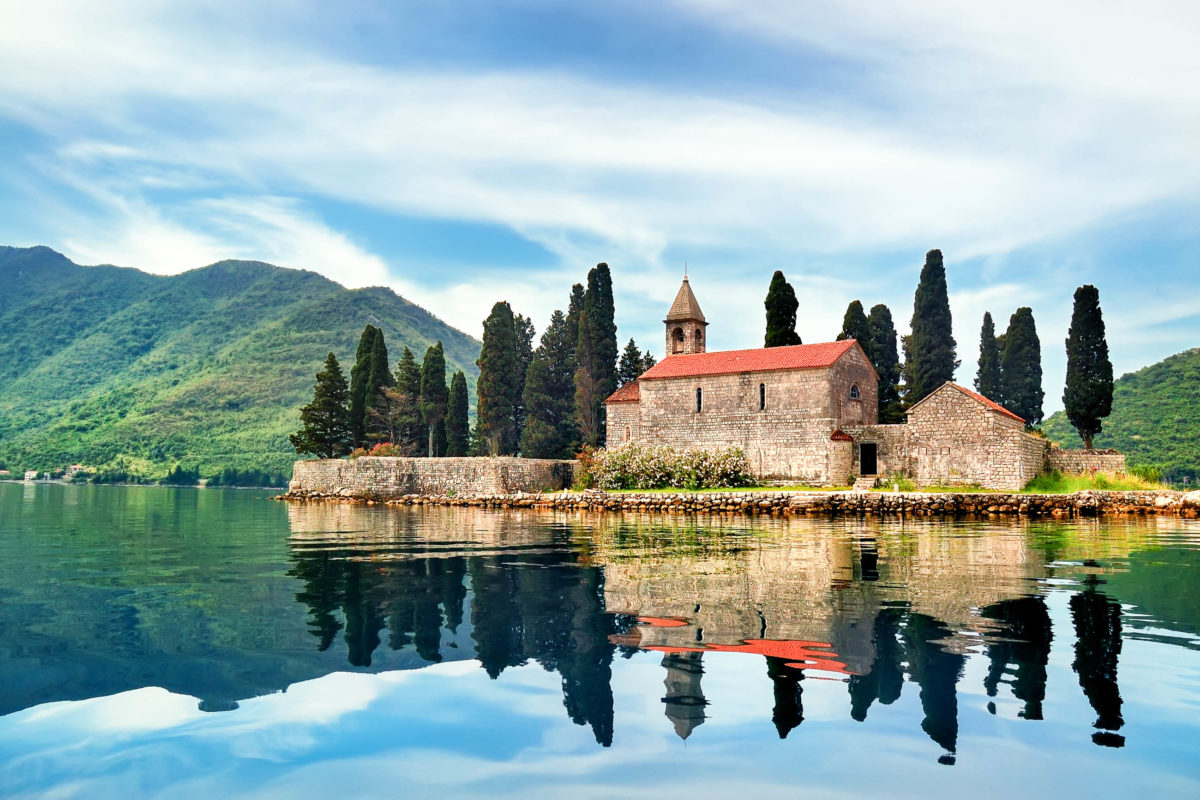
Im Gegensatz zu Gospa od Škrpjela ist die Insel des „Hl. Georg“ ein natürliches Eiland, auf dem im 12. Jahrhundert das erste Benediktiner-Kloster gleichen Namens errichtet wurde. Sveti Đorđe war lange Zeit Zankapfel zwischen Perast und Kotor, bis die winzige Insel im Jahr 1634 schließlich Perast zugesprochen wurde.
Nur 20 Jahre später wurde Sveti Đorđe von den Türken demoliert, nachdem sie nach der Belagerung von Perast und Kotor ohne Erfolg wieder abziehen mussten. Weitere 13 Jahre später zerstörte das Erdbeben von 1667 auch den Rest der Klosteranlage. Das heutige Kloster von Sveti Đorđe inmitten hoher Zypressen stammt aus dem frühen 18. Jahrhundert und beherbergt die Grabstätten der großen Persönlichkeiten von Perast.
Weiterführende Links:

